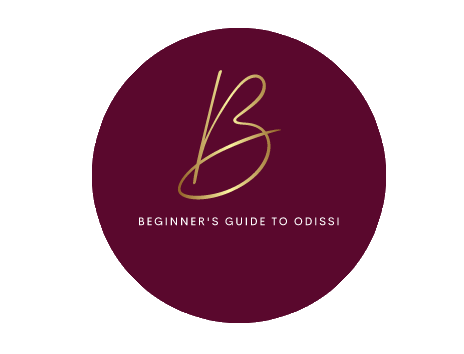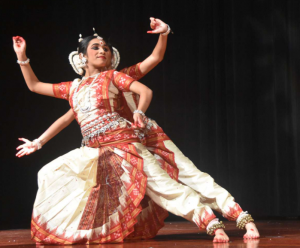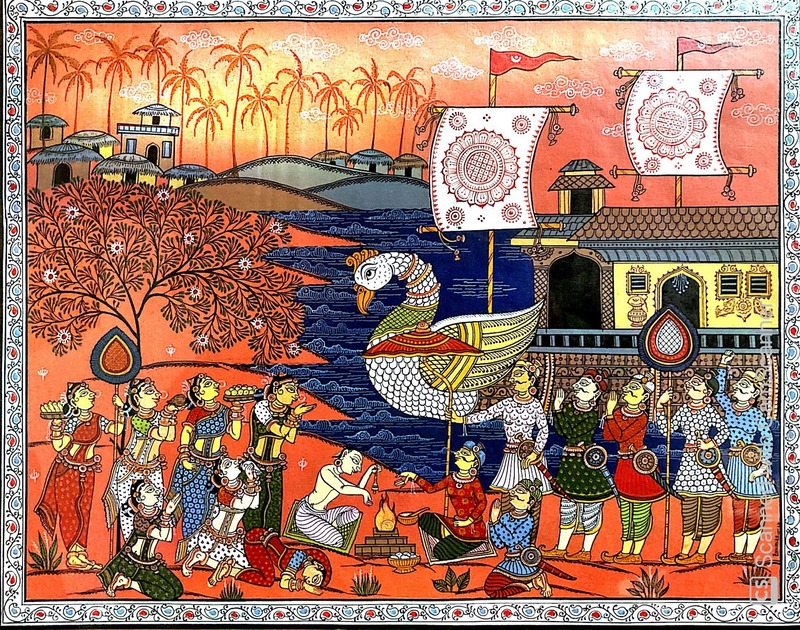Before we dive into the parts of the dance repertoire, we must be able to differentiate between the three types of dance items that are predominantly taught by Odissi gurus to their disciples.
- Nritta (Pure Dance) ~ an abstract, fast, and rhythmic aspect of the dance. It emphasizes the beauty of motion, forms, speed, range, and pattern.
- Nritya (Abhinaya: Expressive Dance) ~ a slower and expressive aspect of the dance, storytelling, spiritual/religious gestures through the use of mudras, and silent expressions.
- Natyam (Dance Drama) ~ a play, typically consisting of a group of dancers; generally, natyams consist of reenactments of Hindu mythology and dancers work to focus on storytelling through their movements, expressions, and footwork during the performance.
When a dancer first learns Odissi and is ready to perform, his/her guru will first introduce them to Manglacharan. This dance piece focuses on the dancer to take blessings from the Gods, their gurus, parents, and the audience members. This dance item also highlights a Ganesh (Hindu God of Wisdom) Shloka that brings luck on the dancer and his/her journey through dance. This is the formal introduction the dancer must give before delving further into the repertoire.
Next, the dancer will be introduced to Battu and/or Sthayee. Here the guru trains his/her dancer to become strong in the basic techniques, movements, and footwork. These dance pieces consist of various tempos of footworks, bhangis or poses, the coordination of the eye, neck, feet, hand, torso in correlation to the footwork, and gives the dancer a general idea of the different taals (beats) that compose the music. (Battu and Sthayee are both examples of a Nritta.)
When a dancer has mastered the basic techniques, he/she is then introduced to Pallavi. There are many Pallavi dance pieces, and each piece focuses on a Raga or Raasa (a melodic framework in Hindustani Classical Music). This dance item focuses on the dancer’s ability to pick up choreography, and perform with grace, and fluidity. The Pallavi dances usually start with slow tempo, but throughout the dance progress to a faster tempo. (Pallavi is an example of Nritta.)
The next dance item is Abhinaya. Here the dancer focuses on the expressive elements of their face (how many types of emotions can the dancer portray), and performs what they have learned through performing an Abhinaya. Generally, Abhinayas are based on stories about Hindu gods, such as Radha/Krishna, Lord Jagannath, Durga, Lord Rama, and many more. Gita Govindas – stories of Jayadev’s Sanskrit work are also depicted in the form of an Abhinaya. (Abhinayas are an example of Nritya.)
Lastly, the dancer learns Mokshya to symbolize the end. The dance piece portrays the salvation of the human body or soul to God. This portrays the end of life where the human body gives up on all of his/her materialistic desires and is ready to enter the after-life. Generally, dancers perform Mokshya as a closing piece during any event where multiple Odissi dance items are performed.
Congratulations! You are now ready to learn the techniques and theories of Odissi.


